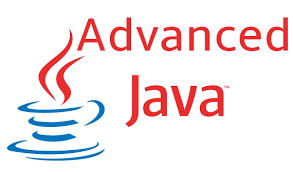 61. What method is invoked to cause an object to begin executing as a separate thread?
61. What method is invoked to cause an object to begin executing as a separate thread?
The start() method of the Thread class is invoked to cause an object to begin executing as a separate thread.
62. Name two subclasses of the TextComponent class.
TextField and TextArea.
63. Which containers may have a MenuBar?
Frame.
64. How are commas used in the intialization and iteration parts of a for statement?
Commas are used to separate multiple statements within the initialization and iteration parts of a forstatement.
65. What is the purpose of the wait(), notify(), and notifyAll() methods?
The wait(), notify(), and notifyAll() methods are used to provide an efficient way for threads to wait for a shared resource. When a thread executes an object’s wait() method, it enters the waiting state. It only enters the ready state after another thread invokes the object’s notify() or notifyAll() methods..
66. What is an abstract method?
An abstract method is a method whose implementation is deferred to a subclass.
67. How are Java source code files named?
A Java source code file takes the name of a public class or interface that is defined within the file. A source code file may contain at most one public class or interface. If a public class or interface is defined within a source code file, then the source code file must take the name of the public class or interface.
If no public class or interface is defined within a source code file, then the file must take on a name that is different than its classes and interfaces. Source code files use the .java extension.
68. What is the relationship between the Canvas class and the Graphics class?
A Canvas object provides access to a Graphics object via its paint() method.
69. What are the high-level thread states?
The high-level thread states are ready, running, waiting, and dead.
70. What value does read() return when it has reached the end of a file?
The read() method returns -1 when it has reached the end of a file.
71. Can a Byte object be cast to a double value?
No. An object cannot be cast to a primitive value.
72. What is the difference between a static and a non-static inner class?
A non-static inner class may have object instances that are associated with instances of the class’s outer class.
A static inner class does not have any object instances.
73. What is the difference between the String and StringBuffer classes?
String objects are constants. StringBuffer objects are not constants.
74. If a variable is declared as private, where may the variable be accessed?
A private variable may only be accessed within the class in which it is declared.
75. What is an object’s lock and which object’s have locks?
An object’s lock is a mechanism that is used by multiple threads to obtain synchronized access to the object. A thread may execute a synchronized method of an object only after it has acquired the object’s lock.
All objects and classes have locks. A class’s lock is acquired on the class’s Class object.
76. What is the Dictionary class?
The Dictionary class provides the capability to store key-value pairs.
77. How are the elements of a BorderLayout organized?
The elements of a BorderLayout are organized at the borders (North, South, East, and West) and the center of a container.
78. What is the % operator?
It is referred to as the modulo or remainder operator. It returns the remainder of dividing the first operand by the second operand.